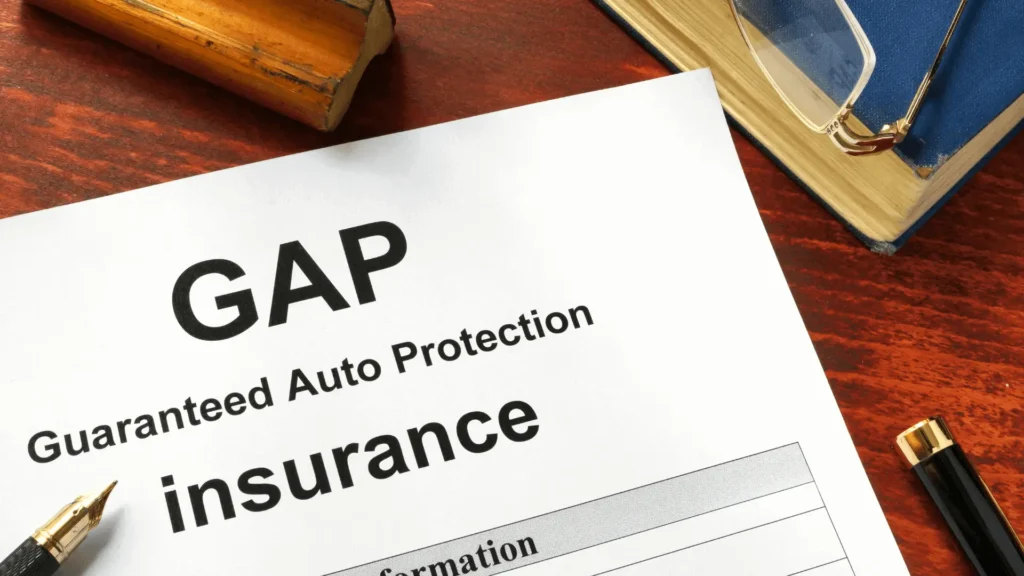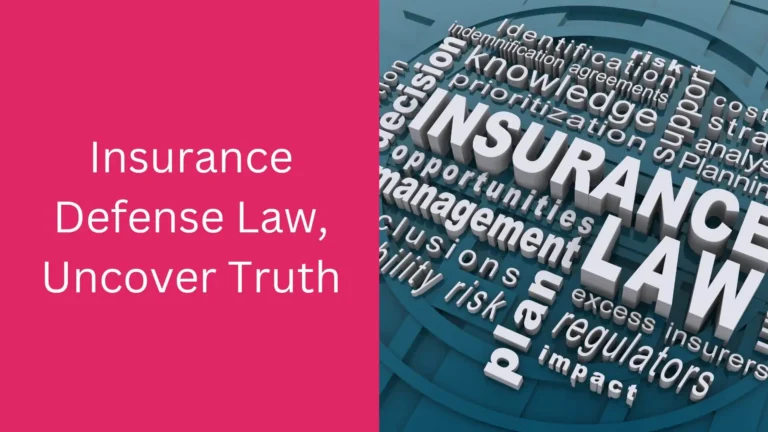How Do You Know if You Have Gap Insurance? Are You Safe
How Do You Know if You Have Gap Insurance, To confirm whether you have gap insurance, begin by examining your auto insurance policy and loan agreement for any references to this specific coverage, which protects you from the financial difference between your car’s value and what you owe on your loan or lease. Look for terms such as “gap coverage” or “loan/lease payoff coverage” in your policy documents.
It’s also wise to reach out to your insurance agent for clarification on whether this coverage is included. If you financed your vehicle through a dealership, check if gap insurance was offered as part of your financing agreement. Understanding these aspects is crucial to ensuring you have the protection needed in the event of your vehicle being totaled or stolen.

OverView
Knowing whether you have gap insurance is essential for protecting yourself from financial loss in the event your vehicle is totaled or stolen. Start by reviewing your auto loan or lease agreement for any mention of a GAP waiver, which may already provide coverage. If it’s unclear, reach out to your dealership and insurance provider for confirmation on your coverage status.
By checking these documents and consulting with professionals, you can quickly determine if you need to add gap insurance. This proactive approach helps ensure you’re not left with significant out-of-pocket expenses, allowing you to drive with peace of mind knowing you have the right protection in place.
To enhance your financial protection, it’s vital to explore various insurance options beyond gap insurance. Understanding how to choose an insurance agent, and its capabilities can help you find the right coverage tailored to your needs.
Additionally, consider how your insurance plan may influence other aspects of your life, such as healthcare costs for procedures like, Invisalign, Lasik eye surgery or dental services, including veneers. By being informed about these connections, you can make better decisions for your overall financial security and well-being.
Review Your Auto Insurance Policy
One of the first and simplest ways to confirm if you have gap insurance is by checking your current auto insurance policy. Your policy’s declaration page, often found at the beginning of the policy documents, lists each type of coverage included in your plan along with limits and additional options. Look specifically for terms such as “Gap Coverage,” “Loan/Lease Payoff,” or “Guaranteed Asset Protection.” If it’s unclear, reach out to your insurance agent or customer service representative for confirmation.
Examine Your Car Loan or Lease Agreement
Sometimes, gap insurance is bundled into your car loan or lease agreement, especially if you financed your vehicle through a dealership. Review your original loan or lease paperwork, as it will specify any additional coverages, including gap insurance. You may see gap coverage listed as a line item with a specific cost or fee. If you can’t find this information in your documents, contact the dealership or lender that arranged the financing for clarification.
Look for Gap Insurance Charges on Billing Statements
Gap insurance is typically an add-on that incurs additional monthly or annual fees. Review recent billing statements from your auto insurance provider or lender to see if there’s a specific charge for gap insurance. It might appear as an extra line item in your insurance or loan payments. Some lenders may even include gap insurance costs in your monthly car payment if it was added at the time of purchase.
Contact Your Insurance or Loan Provider Directly
If you’re unable to confirm gap insurance through policy documents or loan agreements, the most direct approach is to contact your insurance provider or lender. Insurance agents can quickly verify if gap coverage is part of your policy. Similarly, your loan or lease provider will be able to confirm if gap insurance was included in your loan agreement at the time of purchase.
Consider Situational Factors When Determining Need
Certain purchase circumstances make gap insurance more common. If you financed a new car with little or no down payment, or if you’re paying off a high-interest or long-term loan, gap insurance is often recommended and may have been added at purchase. These situations increase the risk of owing more than the car’s market value, making gap insurance a likely inclusion in your policy or loan.
What is Gap Insurance?
Gap insurance, or Guaranteed Asset Protection insurance, is an optional auto insurance coverage designed to protect you financially if your car is totaled or stolen while you still owe more on your loan or lease than the vehicle’s actual cash value. Vehicles typically depreciate quickly, especially within the first few years of ownership, and this can create a “gap” between the car’s market value and the amount you still owe on it.
If an accident or theft occurs during this period, standard auto insurance will only cover the car’s market value, which may leave you responsible for paying the remaining balance on your loan. Pelvic health is also something that should be considered when you’re in the process of managing the physical stress caused by an accident or long recovery periods.
Gap insurance covers this difference, paying off the “gap” between your auto insurance settlement and the outstanding loan balance. This type of coverage is particularly useful for those with long-term loans, high-interest rates, or low down payments, as these factors increase the likelihood that your loan balance may exceed the car’s depreciated value.
Key Features of Gap Insurance:
Bridge the Financial Gap
Gap insurance helps cover the remaining balance on your loan if your car is declared a total loss and the insurance payout is insufficient to pay off your loan.
Protection from Depreciation
Since new cars lose value quickly, gap insurance ensures that you’re not left with a large debt due to this depreciation, especially in the first years of ownership.
Applies in Total Loss Scenarios
Gap insurance is only applicable when the vehicle is deemed a total loss or in cases of theft where the vehicle isn’t recovered.
Typically an Add-On
Gap insurance isn’t part of standard car insurance policies. It’s typically offered as an optional add-on by auto insurance providers, dealerships, and lenders.
Who Needs Gap Insurance?
Gap insurance is most beneficial for new car buyers, lessees, or anyone with a loan-to-value ratio that’s higher than the car’s current market value. Generally, this includes:
New Car Owners with Minimal Down Payments
If you made a low or zero down payment on your vehicle, there’s a greater chance that your loan balance will exceed the car’s depreciated value early on.
Long Loan Terms
Extended loan terms (such as 60 months or more) increase the risk of having a higher loan balance than the vehicle’s cash value as it depreciates.
High-Interest Loans
Higher interest rates mean a larger portion of each payment goes toward interest rather than principal, increasing the gap.
Leased Vehicles
Many lease contracts include gap insurance as a requirement since the lessee is responsible for paying the remaining lease balance if the car is totaled.
Check for GAP Waiver Provision on Your Lease Agreement

If you’ve leased your vehicle, checking your lease agreement for a GAP waiver provision is essential, as this provision can serve a similar purpose to gap insurance. A GAP waiver, often included in lease contracts, relieves you from having to pay the remaining balance on your lease if the vehicle is totaled or stolen. This waiver essentially “forgives” the remaining lease debt, bridging the gap between the vehicle’s depreciated market value and the amount owed.
To determine if you have a GAP waiver:
Review the Lease Agreement Details
Lease agreements typically specify any included protections, including a GAP waiver. Look through the section on insurance or additional coverages, as it may outline that your leasing company will cover the difference in the event of a total loss. This provision can often be overlooked but offers significant protection.
Ask Your Leasing Company for Confirmation
If you don’t find clear language about a GAP waiver, reach out to your leasing company to confirm. They can clarify whether the waiver is included and explain its terms, including any exclusions or conditions.
Understand Limitations and Conditions
Some GAP waivers may come with specific conditions, such as requirements to use the leasing company’s preferred insurer or limits on certain losses. Knowing these details helps ensure you understand the extent of your coverage without needing separate gap insurance.
If your lease includes a GAP waiver provision, you may not need additional gap insurance, potentially saving on costs. This built-in protection is often sufficient to cover the lease balance if an unexpected total loss occurs, providing financial peace of mind without requiring an extra policy.
How Can You Purchase GAP Insurance?
Purchasing gap insurance can be straightforward, and it can be obtained from several sources. Here are the most common methods:
Through Your Auto Insurance Provider
Many major auto insurance companies offer gap insurance as an add-on to a standard auto policy. You can inquire about adding it when you first set up your policy or add it later if your situation changes. This option is convenient since it consolidates your coverages under one insurer, and you can manage both your comprehensive auto and gap insurance together.
Through Your Dealership
Dealerships often offer gap insurance at the time of vehicle purchase, especially when you finance through their lending partners. They might add the gap insurance cost directly into your loan, which can increase your monthly payment slightly but keeps everything within one payment. Dealership gap insurance, however, is often more expensive than purchasing through an insurer, so it’s essential to compare rates and consider if this convenience justifies the cost.
Through Your Loan or Lease Provider
If you lease or finance your vehicle through a bank, credit union, or finance company, they might offer gap insurance as part of the loan package. This can be an efficient way to add gap insurance, especially if your lender includes it in your monthly loan payment. However, confirm the terms and cost, as some lender-provided gap insurance may also carry higher premiums compared to direct insurance providers.
Standalone Gap Insurance Providers
Some specialized companies offer standalone gap insurance, which can be useful if you want flexibility and are looking to shop around for the best rate. Standalone policies can often be cheaper and tailored, giving you coverage for a specific period without affecting other car insurance policies.
Before purchasing, compare costs from different sources, as rates and terms can vary. Always ensure that the policy terms cover your needs, especially if you have a high loan-to-value ratio or other financial risk factors.
Do I Need Gap Insurance?
Determining if you need gap insurance depends on your financial circumstances and the specifics of your car loan or lease. Here are key factors to help decide:
High Loan-to-Value Ratio
If your loan balance is significantly higher than your car’s actual cash value, gap insurance is generally recommended. This situation is common for new cars since they can depreciate by up to 20% in the first year alone.
Low or No Down Payment
If you purchased your vehicle with a small down payment (or none at all), it may take time for your loan balance to match the car’s value, making you vulnerable to a financial gap. Gap insurance helps bridge this difference and protects against a potential loss.
Extended Loan Terms or High-Interest Loans
Longer loan terms (60+ months) and high-interest loans result in slower equity build-up, which means you may owe more than the car’s market value for longer. In these cases, gap insurance provides a safety net, especially during the early years of the loan.
Leasing a Vehicle
For leased vehicles, gap insurance is often required by the lease provider because you’re financially responsible for the car’s remaining lease balance if it’s totaled or stolen. Gap insurance helps cover this lease payoff in full-loss situations, avoiding out-of-pocket costs.
New and Luxury Vehicles
New vehicles depreciate faster, and luxury vehicles or those with a higher-than-average depreciation rate benefit greatly from gap insurance. If your vehicle’s value drops quickly, gap insurance ensures you’re not paying off a loan for more than the car’s current value in case of a total loss.
If any of these scenarios apply to you, gap insurance can be a smart investment. For those with a low loan-to-value ratio or short loan terms, however, gap insurance may not be necessary, as the loan balance could soon match or be less than the vehicle’s value.
Review Your Current Lease
Start by examining your lease agreement if you’re leasing your vehicle. Lease contracts often specify the protections included, which can sometimes include a GAP waiver or other coverage provisions. Look through the document carefully, especially in sections related to insurance or loss protections. This review can reveal if the lease already includes a GAP waiver, which could mean you’re protected against paying the remaining balance if the vehicle is totaled or stolen.
Speak with Your Dealership
Your dealership can be a valuable resource in clarifying your coverage options. They often provide gap insurance at the time of purchase or lease, so they may have records of any add-ons or policies you opted for. Additionally, dealerships can explain the benefits and terms of any gap insurance included in your lease or financing agreement. If you don’t currently have coverage, dealerships can help you explore options, though it’s worth comparing these to alternatives through insurers to find the most cost-effective solution.
Contact Your Insurance Agency
Lastly, reach out to your insurance provider to confirm whether gap insurance is part of your current policy. Many insurers offer it as an optional add-on, and they can quickly confirm if you already have this coverage or if adding it is a good option for you. Your insurance agent can explain the terms, cost, and how gap insurance would apply to your specific vehicle, helping you make an informed choice. This step also provides an opportunity to discuss other coverage adjustments that could better protect your investment.

